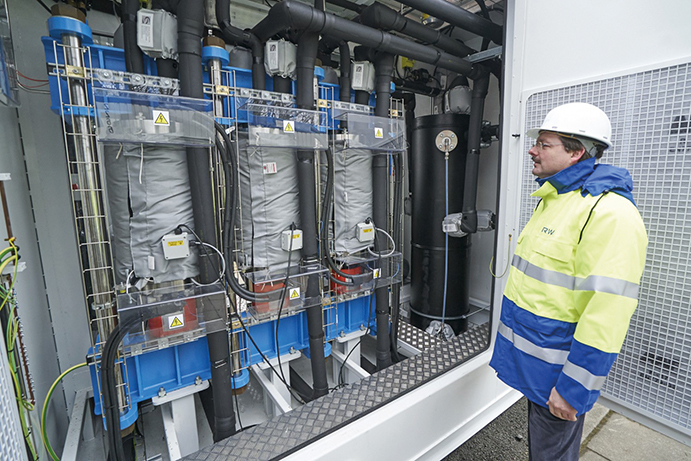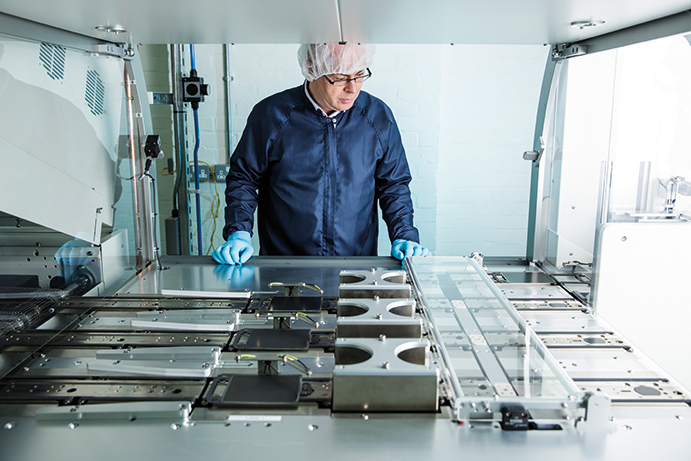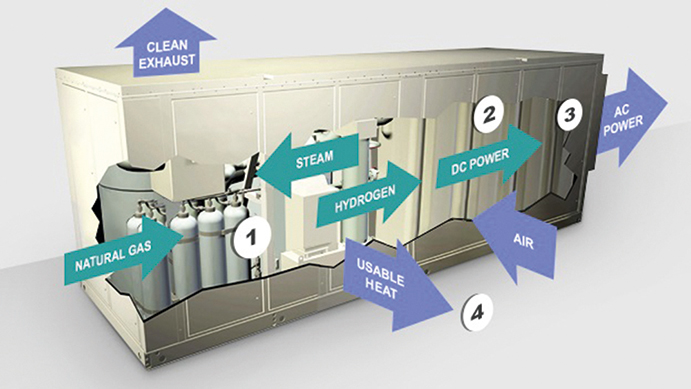Changes in the politics and technology of energy mean that the idea of a hydrogen economy might be about to make its mark in a number of practical arenas
It might be thought that as the hype of the last decade has declined, the idea of a hydrogen economy is once again on technology’s back-burner. But not only did it never go away, it is seeing some real progress in many areas that might make some aspects of the old hydrogen economy concept come much closer to fruition.
There is a large and active ‘hydrogen community’ in the UK, organised as part of a network called H2FC Supergen (H2FC, meaning hydrogen fuel cell, is one of the many abbreviations and acronyms that proliferate in this sector, while Supergen is an acronym for SUstainable Power GENeration). Now in its sixth year of operation, the H2FC Supergen is administered from a hub organisation at Imperial College London. It funds multidisciplinary research and produces white papers on how hydrogen and fuel cell technologies can affect energy policy.

The very term hydrogen economy is not universally popular among the community. “We don’t like the phrase,” commented Prof Marcus Newborough, head of business development for ITM Power, a Sheffield-based company that develops and manufactures equipment to produce hydrogen by electrolysing water. “It gets in the way of feet-on-the-ground developments year by year from a zero start point, which is pretty much where the sector is today. To come up with a complete economy based on hydrogen is well beyond the day after tomorrow; it’s a long time in the future.” Rather than this grand vision, Newborough prefers to focus on incremental introduction of hydrogen and fuel cell technologies as demonstrators.
Pointing out the drawbacks
Prof Paul Dodds, who specialises in the impact of H2FC technology on policy at University College London (UCL), also pointed out the drawbacks of speaking about a hydrogen economy. “It kind of implies that everything you’re going to do is powered by hydrogen, which isn’t the case,” he said. “Hydrogen is an energy vector such as electricity, but it isn’t as good as electricity – you can’t power your stereo with it.” Hydrogen is, however, much easier to store than electricity, Dodds added; and this gets to the heart of why some in the community think that the energy, policy and technology landscape has changed since the early 2000s in favour of hydrogen technologies.
In the last decade, the hype around hydrogen was mostly concerned with its role in greenhouse gas emissions reduction from transport. This is still a factor, but related to this and rising in importance is the increasing deployment of renewable energy generation, its unpredictable and intermittent nature, and limited capacity of power distribution grids. Prof Dan Brett, a colleague of Dodds at UCL involved more with fuel cell research, said: “In a way hydrogen is more relevant than ever, because in the past hydrogen was very linked with transportation. But now with the huge uptake of renewables and the need for grid-scale energy storage to stabilise the energy system, hydrogen can have a real role to play, and what’s interesting about that, in contrast to a pure battery play, is that there’s a number of things you can do with it. You can turn it back into electricity, you can put it into vehicles or you can do a power-to-gas arrangement where you pump it into the gas grid.”

Dodds doubts whether turning it back into electricity is viable: the cycle efficiency is “pretty horrible”, he said, “and there are so many other things you can do with the hydrogen”.
Using hydrogen as energy storage for renewables is the subject of an EU-funded project currently underway on the Orkney Islands, which has an abundance of renewable generation sources (tidal, wind and wave) but whose electricity grid is unable to handle much of the power they produce. To get around this problem, electrolysers from ITM Power have been installed to use excess electricity to produce hydrogen from water. The hydrogen is used to generate electricity for boats docked in the islands’ main harbour at Kirkwall, and also for the harbour facilities; the islands are purchasing a small fleet of vans with fuel cell range extenders and installing a filing station; and two local schools on small islands use hydrogen for heat and electricity. “The islands currently have to curtail about 30-40 per cent of [the renewable electricity] they generate, which is a frustration,” said Newborough. “They could deploy even more wind; they’ve got the space to do it and the motivation, but they can’t sell the output into the electricity grid because it doesn’t have the capacity to take it away into northern Scotland. So they’re demonstrating heat, transport and generation applications all with electricity that would otherwise be curtailed.”
Living on an island
This sort of system is ideal for islands and isolated territories where excess energy from renewables would otherwise be curtailed because of grid capacity, Newborough explained. Could the whole UK itself be regarded as such an isolated territory? “Absolutely.” he said. “There are hundreds and hundreds of terawatt hours of renewable energy just on the North Sea coast alone, and even more resource as you go offshore, but if you look ahead to 2050, the question becomes, how do you harness those resources? If you try to cram them all onto the electricity grid, you won’t be able to do it; it’ll cost a fortune to upgrade the grid sufficiently and you’ll still end up curtailing a lot of it. So if you push some of the electricity into the grid and turn the rest into hydrogen, you can use that for fuelling vehicles, decarbonising the gas grid, making ammonia or other chemicals. It becomes a feedstock on which you can base a very low-carbon future.” For hydrogen storage, Newborough favours geological features such as underground salt caverns, which are already used to store natural gas in the UK and Germany as a buffer for peak demand.
Newborough added that there is potential to make the gas grid much more green: rather than using fossil-fuel natural gas, he suggested making more use of methane from biogas and using hydrogen from renewables to make synthetic methane from the CO2 content of the biogas, which approaches 50 per cent.

This sort of vision for a UK on a partly hydrogen economy and a greener gas grid is extremely radical and long term, and would require very ambitious government policy, said Newborough.
Elsewhere, Japan currently boasts the world’s largest number of fuel cells in operation by far, with numbers currently nudging a quarter of a million and rising steadily. These are in buildings, providing combined heat and power (CHP). Used in this way, the efficiency of fuel cells at utilising the energy content of hydrogen can approach 90 per cent; the hydrogen and oxygen combining to produce water release energy both in the form of heat and providing electromotive force to produce electric current. With the heat transferred to the water, it exits the cell stack at about 70°C, plenty hot enough to run the central heating in a Japanese home. Domestic fuel cell stacks are made by Toshiba and Panasonic (which both make proton-exchange membranes – PEMs) and Aisin Seiki, which makes more expensive SOFCs (solid oxide fuel cells). These are heavily subsidised by the Japanese government to make household purchase affordable (they cost around as much as a car) and are known as Ene-Farms. The roll-out plan from the ministry of economy, technology and industry, formulated in 2014, has a target of 5.3 million units in service by 2030 and is currently on schedule.
Such technology may not be suitable for the UK, said Newborough. “The heat demand in this country is so seasonal and peaky. There are so many gas boilers that are pretty efficient nowadays and people are happy with them. There’s also the issue of the ratio of heat to power. Imagine a cold February morning at -10°C on a whole street, with everyone’s boiler cutting in at the same time. The heat need at that point in kW is huge relative to the electricity need, but on a milder day the ratio is completely changed. The ability of CHP to match these real-time varying heat demands of people living and working in buildings is ultimately limited.”
To read about progress in fuel cell electric vehicles and the hydrogen refuelling infrastrcture, click here.
History of a concept
The concept of a hydrogen economy has been with us for many years, and in some people’s minds it is grouped with nuclear fusion as something that is always promised for the future but never seems to get any closer. But owing to advances in technology, changing circumstances in politics and concerns over health and the environment, the idea may be poised to make a comeback.
The hydrogen economy concept is an artefact of a particular time and set of circumstances. It was first proposed in 1970 at a seminar run by General Motors by a South African-born British electrochemist named John Bockris, although he was building on ideas put forward by geneticist JBS Haldane as far back as the 1920s.
Bockris suggested that hydrogen, which he envisaged as being generated using solar energy from southern latitudes and wind from northern ones, could be an alternative fuel for vehicles, with electric motors replacing internal combustion engines running on electricity generated through a fuel cell. This technology dates back to 1839, and uses a combination of hydrogen (produced by an industrial process) and oxygen from the air under controlled conditions to initiate an electric current while also producing heat. At the time, fuel cells were in the public eye because of their successful use to generate electricity for the Command and Lander Modules of the Apollo missions.
There was a specific reason for Bockris’s suggestion at that time: the world was on the brink of an oil crisis. The Middle East was curtailing oil production, there were predictions of oil running out in the near future and of prices climbing to $500 per barrel, and there was a widespread belief that an alternative transport fuel could be needed quickly.
Of course, the oil didn’t run out and prices never climbed that high, so Bockris’s vision of the future was never needed. But the hydrogen economy, in some form or another, has never completely faded away; every few years, it seems to rise to prominence again.




Red Bull makes hydrogen fuel cell play with AVL
Formula 1 is an anachronistic anomaly where its only cutting edge is in engine development. The rules prohibit any real innovation and there would be...